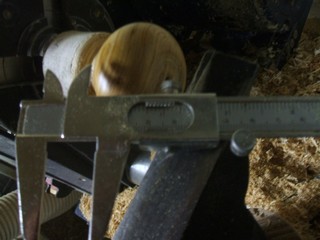
I check the diameter of the tenon with an inexpensive pair of calipers and mark an indentation slightly less on the end of the ball blank. Later I will creep up on the diameter for a good fit.

I check the diameter of the tenon with an inexpensive pair of calipers and mark an indentation slightly less on the end of the ball blank. Later I will creep up on the diameter for a good fit.
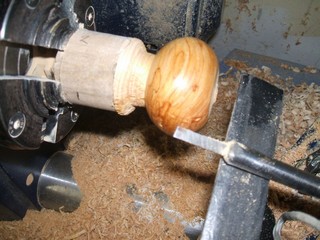
Hollowing begins with straight tool. Distance is judged by eye considering the length of the cutter against the side of the ball.
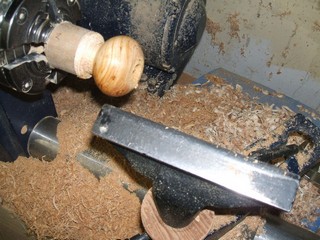
Work your way to the side, checking the diameter of the opening against the tenon on the icicle. I like to set the tool rest so that it swings out of the way to check the tenon.
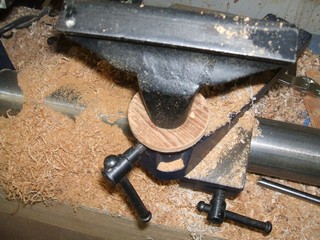
Because the tool rest is set high for hollowing, loosening it to turn means readjusting the height each time. I use a wooden washer of appropriate thickness to maintain the height.
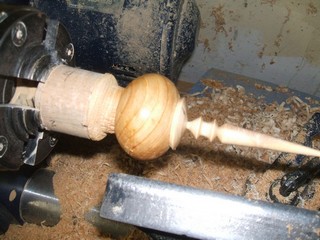
The tenon should be a gentle fit in the ball; neither too tight not too loose but a simple slide in without forcing.
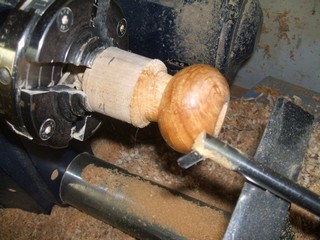
Continue to hollow using a 45° tool where necessary. There is no need to be pretty inside. No one will ever see it. All you need is a thin wall to keep the weight down. Consistency in thickness is more important than the thickness itself.